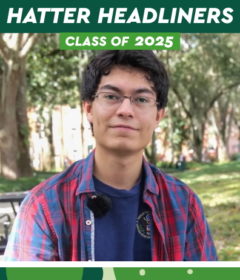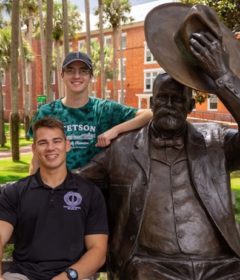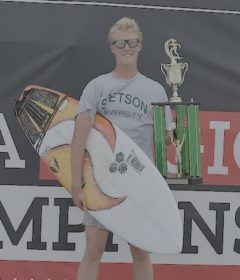Celebrating 140 Years: 1943-1952, Decade Worthy of a Holler
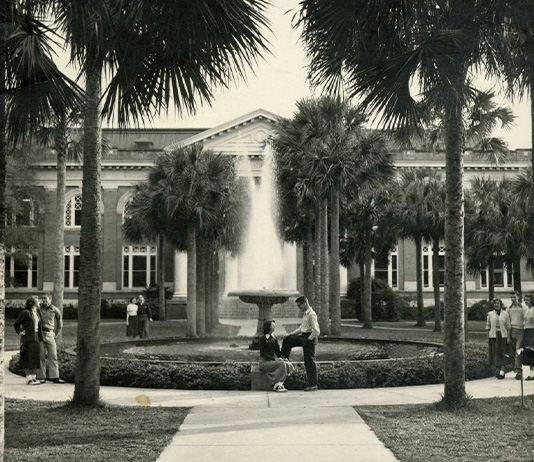
The Presidents
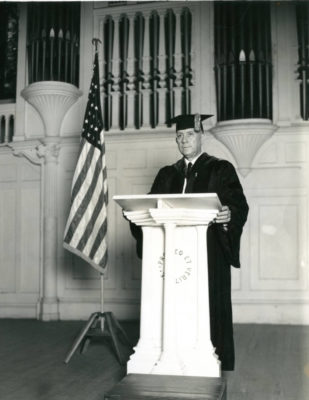
As this decade began, William Sims Allen was president, arriving in 1934 at age 46. Allen graduated from Baylor University and earned advanced degrees from Columbia University before returning to Baylor to serve as vice president and chairman of its School of Education prior to Stetson.
Under Allen, campus religious activity flourished, and a formal Department of Religion was organized. Daily chapel continued to be required for students, with the services led by the Baptist Student Union in Elizabeth Hall chapel. (The Baptist relationship ended in the early 1990s.) Also notably, although Allen coped with the challenges of the Depression and World War II, Stetson grew from a few hundred students to 2,000 during his time in office.
In September 1947, Allen resigned due to illness, and he died on June 1, 1951.
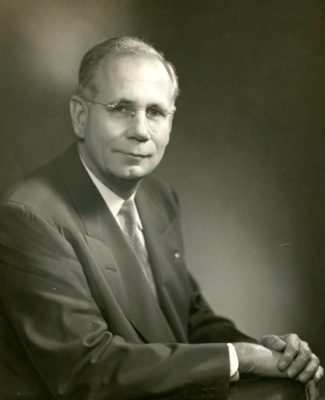
In 1948, J. Ollie Edmunds became Stetson’s four president, also at age 46. The only Stetson alumnus to become president, Edmunds had begun his university association in 1921 as an undergraduate student. He was an active undergraduate student, presiding over his sophomore and senior classes, among many other activities.
Unlike his predecessors, Edmunds was not a professional educator. He was a former lawyer, a Duval County judge and a businessman who had made an unsuccessful run for the U.S. Senate in 1944. Under Edmunds’ leadership, a planning and development office was started, and modern fundraising techniques began.
All totaled, his 19-year tenure as president rejuvenated the university. He hired new faculty, raised academic standards, enlarged the campus from 33 to 80 acres, raised $18.4 million and built 16 new buildings. Beloved by faculty and students, Edmunds was highly respected on campus, in the state and across the country. In 1967, he resigned to return to private business and was named the first Chancellor of Stetson by the university’s Board of Trustees.
Allen Hall
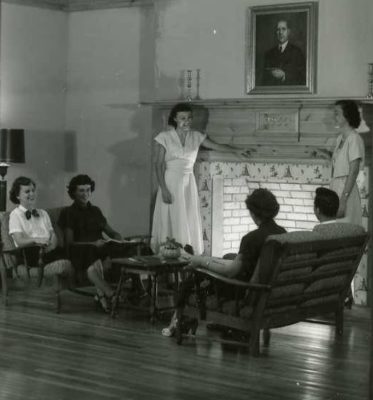
In 1950, Allen Hall became one of the 16 buildings added to the campus during Edmunds’ time as president. Still today, the 6,000-square-foot concrete/masonry structure features a brick exterior, front porch with two-story columns and a courtyard patio where outdoor classes often take place. It is named after President Allen and largely built with the help of the Florida Baptist Convention.
Today, Allen Hall remains the center of religious activities involving all denominations on the Stetson campus.
Holler Fountain
In June 1951, Stetson received something to really holler about (pun intended, couldn’t resist). That year, the Holler Fountain was installed as the centerpiece of Stetson’s Quadrangle (now Palm Court), bounded by Elizabeth Hall, Sampson Hall and the formerly-present Stetson and Holmes halls.
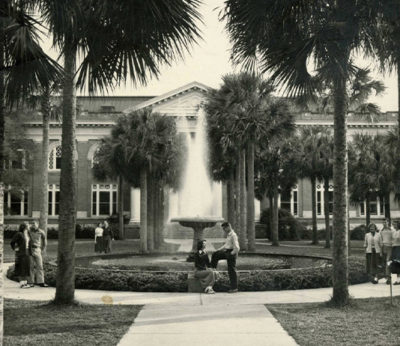
The Art Deco-style fountain was commissioned by Earl Brown of Florida Exhibits Inc., who designed it to symbolize the hopes and ambitions of the many builders of Florida. The fountain was constructed in DeLand as a presentation piece for the 1937 Great Lakes Exposition in Cleveland, as well as the New York World’s Fair in 1939-1940. It arrived on campus as a gift from William E. Holler Jr. He donated the fountain in memory of his father, William E. Holler, who was an executive with General Motors. (Think Holler car dealerships.)
At the time, President Edmunds wrote the following about the fountain: “What could be more appropriate as a symbol of Stetson University than a fountain!”
He was correct. These days, Holler Fountain continues as a Stetson icon — an picturesque setting that boasts manicured lawns, benches and walkways, and is used daily as a place for student activities, concerts, hammock lounging and outdoor university receptions.
-Michael Candelaria and Stetson University Archives

